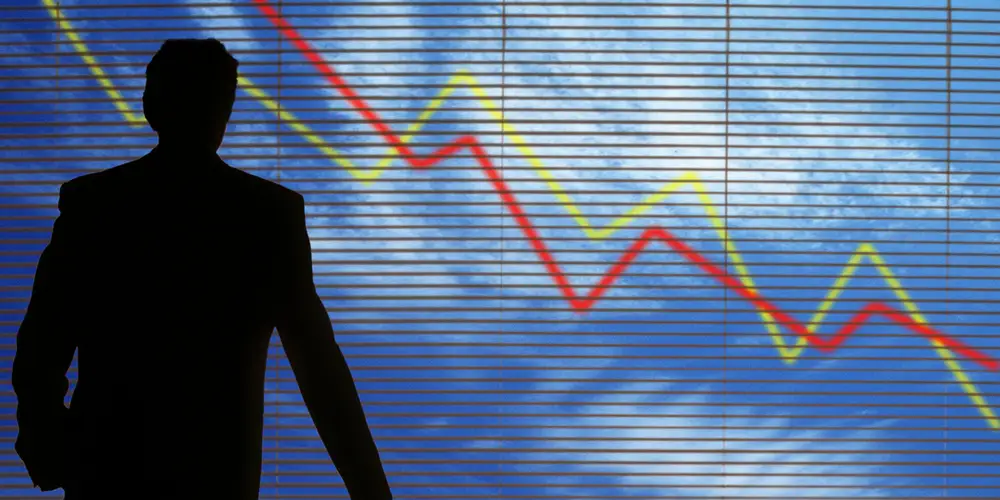There’s been a lot of argument lately over whether the US economy is in a recession. If you’re still confused about that, you’re not alone.
This much we know for sure: Gross domestic product shrank by 1.6% during the first quarter and 0.6% in the second quarter of 2022. The back-to-back quarterly declines in GDP prompted some to quickly label it a recession. Others countered that separate indicators including low unemployment, strong job growth, and increased household savings mean there is no recession.
Whether or not the US economy is in a recession has been a politically charged debate in the runup to the November midterm elections. With control of Congress at stake, a weak economy can really hurt the party in power.
What is a recession?
In general, a recession is defined as two consecutive quarters of negative GDP. This idea was popularized in a 1974 New York Times article by Julius Shiskin. In it, Shiskin says that a healthy economy expands over time, so two consecutive quarters of slowed growth suggest an underlying problem.
However, many argue this definition is overly simplistic since it doesn’t take employment, income, sales, and a range of other factors into account.
The National Bureau of Economic Research (NBER) uses a broader definition, stating that a recession is “a significant decline in economic activity that is spread across the economy and that lasts more than a few months.”
So are we in a recession?
While there’s still a debate over the semantics of this, the answer appears to be no. The US economy isn’t in a recession. Even though there have been two consecutive quarters of GDP contraction, there’s widespread agreement that the overall conditions consistent with a recession have not been met.
Anessa Custovic, PhD and chief investment officer of Cardinal Retirement Planning, says we may be heading toward a recession in 2023, but that it could be a mild one.
“The labor market is so strong right now that we may be able to ride the recession out and not feel it too much,” she says.
Economists and business leaders generally don’t think the US economy meets the criteria for a recession since employment and spending levels have remained relatively strong even while the GDP contracted. However, it’s difficult to say definitively, since income and spending have struggled to keep pace with inflation.
Will there be a recession in 2023?
Although there’s broad agreement that we aren’t yet in a recession, there has been deepening concern that we’re headed in that direction. A recent KPMG survey found that 91% of CEOs in the US anticipate there will be a recession in the next 12 months.
The heads of the largest investment banks have been among those sounding the alarm.
For instance, JP Morgan CEO Jamie Dimon has been fairly vocal about the likelihood of a coming recession. He stated in June that there’s a 20% to 30% chance of a “harder recession” and a 20% to 30% chance of “something worse.”
Goldman Sachs CEO David Solomon echoed similar concerns during the company’s third-quarter earnings call. He said rising interest rates and geopolitical instability are affecting Goldman Sachs’ performance. And Solomon told CNBC there’s a “good chance” the US will enter a recession.
Who decides when a recession has started?
The National Bureau of Economic Research’s Business Cycle Committee is the authority that decides whether or not we’re in a recession. The NBER is a private, nonpartisan organization that analyzes major economic issues.
“The Business Cycle Committee labels all parts of the US economic cycle — the peak, the trough, etc.,” Custovic explains. “They have a set of criteria that they use to identify a recession.”
And since the release of macroeconomic data usually lags the time periods for which it is collected, by the time the NBER does declare a recession, we’ve often already been in one for at least a few months.
How long does a recession last?
How long a recession lasts depends on its severity. But they don’t usually last as long as most people think. According to data from the NBER, the average recession since 1854 has lasted about 17 months.
Custovic points out that if we look at more recent examples — like from 1945 to 2020 — the average length of the economic contraction in the US is a little more than 10 months. “This suggests that the length of recessions are getting shorter now compared to historical ones,” she says.
How to prepare for a recession
The financial impact of a recession spreads throughout the US economy, with lower-income families getting hit the hardest. So it’s essential to prepare ahead of time.
This doesn’t just mean preparing yourself financially. And Custovic says it’s actually most important to prepare emotionally, as recessions can be frightening, particularly for retirees and investors.
“People can make emotional decisions like pulling all cash out of the market when they get scared, and history has proved over and over again this is not the right thing to do,” she says.
Since we never know how prolonged or severe a recession will be, it’s a good idea to prepare for the worst.
“This means having at least a few months’ worth of expenses saved up in case you become unemployed and need to search for a new job,” Custovic explains. “Also, I highly recommend holding off on any large-scale purchases until economic uncertainty fades.”
At the same time, Custovic recommends evaluating any investments you have to make sure you have a good mix of assets to reduce your risk of experiencing massive losses if a few of them underperform.
“Make sure your investments are well diversified and can weather the storm of economic uncertainty,” she says.

